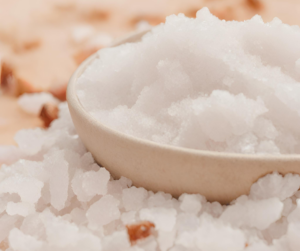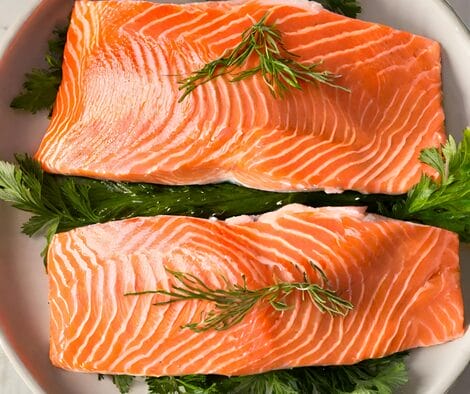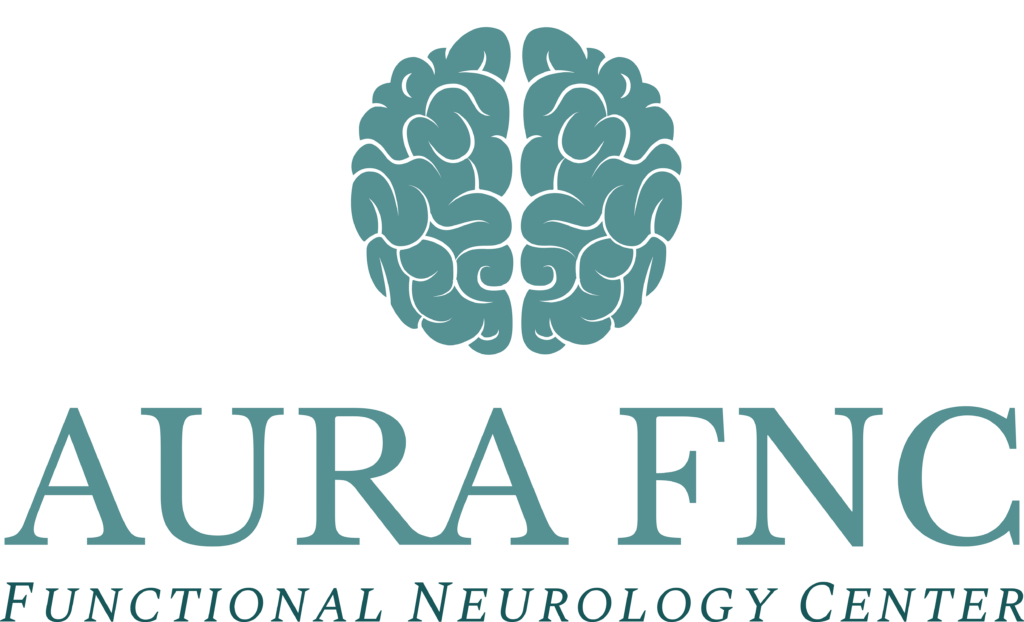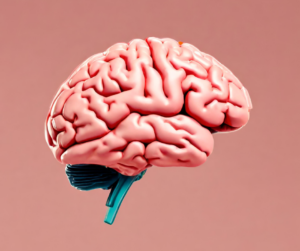Discover what foods can truly help with migraine. Learn about trigger and relief foods in this comprehensive help guide to feeling better using food. The symptoms of severe headaches, nausea, and sensitivity to light can make it difficult to go about daily activities. Fortunately, there are several types of foods and dietary recommendations that may help reduce the frequency and severity of migraine attacks. This article will explore which foods can help with migraine and how they work.

Dr. Diana Tyler DC, DACNB
Founder of Aura Functional Neurology Center. Board Certified Chiropractic Neurologist and migraine specialist. Graduate of Palmer College of Chiropractic and Diplomate of the American Chiropractic Neurology Board.
Discover what foods can truly help with migraine. Learn about trigger and relief foods in this comprehensive help guide to feeling better using food. The symptoms of severe headaches, nausea, and sensitivity to light can make it difficult to go about daily activities. Fortunately, there are several types of foods and dietary recommendations that may help reduce the frequency and severity of migraine attacks. This article will explore which foods can help with migraine and how they work.
What is A Migraine and how is it related to food?
A migraine is a type of headache characterized by intense pain, often throbbing or pulsing, usually on one side of the head. Migraines can be debilitating, causing sensitivity to light and sound, nausea, and vomiting. They can last anywhere from a few hours to multiple days and can be triggered by a variety of factors, including stress, hormonal shifts, certain foods, and environmental factors. Even though there is no one-size-fits-all solution for managing migraines, incorporating certain foods into your diet can potentially help reduce the frequency and severity of migraine attacks. Individuals with migraines can take proactive steps towards managing their condition and enjoying a better quality of life by choosing the right foods and avoiding common trigger foods.
How can food help with migraines?
Food plays a crucial role in managing migraines. A balanced diet can help prevent and alleviate the symptoms of migraines. It’s important to be aware of potential triggers that can be found even in seemingly “healthy” foods. Identifying and avoiding these triggers can make a significant difference.
One approach is to follow a “pain-safe foods” and “migraine-safe foods” guide. These guides provide information about foods that have been known to trigger migraine episodes in some individuals. By adhering to these guidelines, one can make informed choices and reduce the risk of migraines.
Certain foods can help alleviate migraines due to their nutrient content. Magnesium-rich foods like leafy greens, pumpkin seeds, and fatty fish can help relax blood vessels and reduce inflammation. Omega-3 fatty acids found in fatty fish, such as salmon and sardines, have been shown to have anti-inflammatory properties and may help in preventing migraines.
Another dietary approach gaining popularity is the ketogenic diet, which is high in healthy fats and low in carbohydrates. This diet has shown potential in reducing migraine frequency and intensity.
Incorporating these foods into a balanced diet can have positive effects on migraine management. However, it’s essential to note that individual triggers and responses to food can vary. Keeping a food journal can help identify specific triggers and guide dietary choices.
Healthy Diet for Migraine Relief
A healthy diet can play a significant role in managing migraines by reducing the frequency and intensity of attacks. While individual triggers and responses to food can vary, there are certain nutrient-rich foods that have been shown to alleviate migraines. Incorporating these foods into a balanced diet can help relax blood vessels, reduce inflammation, and potentially prevent migraines. Keeping a food journal can also help identify specific triggers and guide dietary choices. Let’s explore some of the foods that have been found to be beneficial for migraine relief.
1. Magnesium-Rich Foods: Magnesium is a crucial nutrient known for its ability to relax blood vessels and reduce inflammation, making it beneficial for migraine relief. Foods such as leafy greens (like spinach and kale), pumpkin seeds, and fatty fish (such as salmon and mackerel) are excellent sources of magnesium. Incorporating these foods into your diet can potentially help reduce the frequency and intensity of migraines.
2. Omega-3 Fatty Acids: Omega-3 fatty acids, found in fatty fish like salmon and sardines, have shown anti-inflammatory properties and may help prevent migraines. Including these fatty fish as part of a balanced diet can provide the necessary omega-3 fatty acids, potentially reducing the risk of migraines.
3. The Ketogenic Diet: The ketogenic diet, which is high in healthy fats and low in carbohydrates, has gained popularity as a potential approach to managing migraines. This diet has shown promising results in reducing the frequency and intensity of migraines, although more research is needed to fully understand its impact on migraines.
Omega-3 fatty acids
Omega-3 fatty acids play a crucial role in relieving migraines. These essential fats have gained attention for their potential anti-inflammatory properties and ability to regulate blood flow, both of which can have a positive impact on migraine attacks.
Including foods rich in omega-3 fatty acids in your diet can help reduce the frequency and severity of migraines. Fatty fish, such as salmon and sardines, are excellent sources of omega-3s. These fish not only provide the necessary fatty acids but also offer additional health benefits like reducing inflammation throughout the body.
Other sources of omega-3 fatty acids include pumpkin seeds and various types of nuts. These plant-based options are a great choice for those who don’t consume fish or prefer a vegetarian or vegan diet.
Regulating blood flow is vital in managing migraines, and omega-3 fatty acids have shown promising results in this area. By incorporating omega-3-rich foods into your meals, you may be able to reduce the frequency and severity of migraine attacks, improving your overall quality of life.
Vitamin B2
Vitamin B2, also known as riboflavin, plays a crucial role in managing migraines. This essential nutrient is involved in energy production, making it particularly important for individuals experiencing migraine headaches.
One of the potential benefits of Vitamin B2 in migraine management is its role in preventing migraines from occurring. Research suggests that a deficiency in riboflavin may increase the frequency and severity of migraine attacks. By ensuring an adequate intake of Vitamin B2, individuals may experience a reduction in migraine symptoms.
Incorporating foods rich in Vitamin B2 into your diet can be beneficial in managing migraines. Good dietary sources of riboflavin include milk and dairy products, lean meats, eggs, and green leafy vegetables. Adding these foods to your daily meals can help ensure you meet your recommended Vitamin B2 intake and potentially reduce the frequency and intensity of migraine headaches.
Leafy greens
Leafy greens can play a significant role in relieving migraines due to their rich content of magnesium and B vitamins, particularly folate. Folate deficiency has been linked to an increased frequency of migraines, making it important to incorporate foods that are abundant in this essential nutrient.
Magnesium has been shown to help reduce migraine pain, and leafy greens are an excellent source of this mineral. In fact, just one cup of cooked spinach contains approximately 157 milligrams of magnesium, meeting a significant portion of the daily recommended intake.
Leafy green vegetables such as kale, spinach, collard greens, turnip greens, and broccoli are all excellent choices to include in your diet if you suffer from migraines. Not only do they provide the necessary magnesium, but they also offer ample amounts of B vitamins, including folate.
By including leafy greens in your meals, you can ensure that you are obtaining the necessary nutrients to potentially reduce the frequency and intensity of migraines. Whether you enjoy them in salads, stir-fries, or smoothies, incorporating these nutrient-dense foods into your diet can offer relief and support your overall migraine management.
Incorporating leafy greens into a well-balanced diet along with other migraine-friendly foods can provide holistic relief from migraine symptoms.
Fresh fruits and vegetables
Incorporating fresh fruits and vegetables into a migraine-relief diet is of utmost importance. These nutritious foods are not only loaded with essential vitamins and minerals, but they are also rich in antioxidants, which are crucial for reducing oxidative stress and fighting against harmful free radicals in the body.
Leafy greens, such as kale, spinach, and Swiss chard, are excellent choices for migraine sufferers. They are packed with magnesium and other essential nutrients that can help alleviate migraine symptoms. Bright-colored vegetables like bell peppers and tomatoes are also beneficial due to their high vitamin C content.
Spicy peppers, such as jalapeños and chili peppers, contain capsaicin, which has been shown to have pain-relieving properties. Root vegetables like sweet potatoes and carrots provide valuable nutrients like vitamin B6, which can support overall brain health and reduce the occurrence of migraines.
Including berries, such as blueberries and strawberries, in your diet can provide a powerful dose of antioxidants, as well as vitamins and fiber. Lastly, mushrooms, such as portobello and shiitake, are a great source of B vitamins and minerals like selenium, which can help maintain a healthy nervous system.
By incorporating fresh fruits and vegetables into your diet, you not only provide your body with essential nutrients but also support your overall migraine management. So, aim to include a variety of colorful and nutrient-dense fruits and vegetables in your meals to optimize your migraine relief.
Increasing protein intake
Increasing protein intake can be beneficial for migraine relief. Proteins serve multiple functions in the body, including building and repairing tissues, producing enzymes and hormones, and supporting the immune system. They also provide energy and help stabilize blood sugar levels, which can be important for migraine sufferers.
Including protein-rich foods in a migraine-friendly diet can help provide these benefits. Some dietary sources of protein that can be incorporated include lean meats like chicken, turkey, and fish. Plant-based options such as legumes, tofu, tempeh, and quinoa are also excellent sources. Greek yogurt, cottage cheese, and eggs can provide protein as well.
It is important to note that individual trigger foods can vary for each person, so it may be helpful to keep a food journal to identify any potential triggers. If you suspect that a specific protein-rich food is a trigger for your migraines, it may be worth considering elimination diets to see if there is a connection.
By increasing protein intake as part of a healthy and balanced diet, migraine sufferers can potentially experience relief and better manage their symptoms. As always, it is recommended to consult with a healthcare professional or registered dietitian for personalized advice and guidance.
Salt intake
Salt plays an important role in a healthy diet for migraine relief. A balanced amount of salt can actually help raise the threshold for migraine attacks.
Salt, also known as sodium chloride, helps to maintain proper fluid balance in the body. This, in turn, affects blood volume and prevents dehydration, which is a common trigger for migraines. By ensuring adequate hydration levels, salt can help reduce the frequency and severity of migraine attacks.
When it comes to incorporating salt into a migraine-friendly diet, it is essential to choose the right sources that provide other beneficial nutrients as well. Some examples of food sources rich in salt that can be included are sea salt and Celtic salt. These types of salts are less processed and contain additional minerals.
Other food sources that naturally contain salt include fish, such as salmon and sardines, which are also rich in omega-3 fatty acids beneficial for migraine relief. Olives and pickles are other examples. In some patients, 1/8 tsp of salt under the tongue can halt a migraine because of its direct impact on ion function and magnesium access.
It is crucial to maintain a balance and to remember that hydration means more salt, not more water. Consulting with a healthcare professional or a registered dietitian can help determine the appropriate amount of salt to incorporate into an individual’s diet for optimal migraine relief.

Diet May Have an Effect on Migraine
Diet may have a significant impact on migraine, as certain foods can either trigger or help alleviate migraine symptoms. By identifying and avoiding potential triggers and incorporating migraine-friendly foods into your diet, you may be able to reduce the frequency and severity of migraine attacks. This article explores the foods that can potentially contribute to migraines and the ones that may offer relief. Understanding these dietary factors can empower individuals to make informed choices and take control of their migraine management.
Modulation of neuropeptides
Neuropeptides, small protein-like molecules that help transmit signals within the brain, have been found to play a crucial role in the development of migraines. Understanding how neuropeptides are modulated may provide insights into both migraine triggers and potential avenues for relief.
Several neuropeptides, including calcitonin gene-related peptide (CGRP) and substance P, have been implicated in migraine pathology. These neuropeptides can affect blood vessels and nerve sensitivity, contributing to the pain and other symptoms experienced during a migraine attack.
Dietary factors can influence neuropeptide modulation, potentially impacting migraine triggers and relief. For example, certain foods rich in additives like monosodium glutamate (MSG) or artificial sweeteners may trigger migraines in susceptible individuals. On the other hand, a healthy diet that includes foods rich in omega-3 fatty acids, such as fatty fish and pumpkin seeds, may help modulate neuropeptides and provide relief.
It is important to note that individual responses to foods can vary. Keeping a food journal and identifying personal triggers can help individuals avoid potential migraine-inducing foods. Additionally, maintaining hydration levels, consuming leafy greens and fresh fruits, and ensuring proper intake of vitamins such as B2 and B6 may contribute to neuropeptide modulation and potentially reduce the frequency or intensity of migraines.
Neuroreceptors and ion channels
Neuroreceptors and ion channels play a crucial role in the development of migraines. Neuroreceptors are proteins located on the surface of cells in the brain and other parts of the body. They receive signals from neurotransmitters, chemicals that transmit messages between nerve cells. In the case of migraines, certain neuroreceptors, such as serotonin receptors, have been found to be involved.
Abnormalities in neuroreceptors can contribute to migraine symptoms. For example, abnormalities in serotonin receptors have been linked to increased sensitivity to pain and changes in blood vessel function, both of which are characteristic of migraines. Additionally, abnormalities in ion channels, which facilitate the movement of charged particles in and out of cells, can also play a role.
Ion channels are involved in regulating the electrical activity of nerve cells. An imbalance or dysfunction in ion channels can lead to abnormal electrical activity in neurons, causing a cascade of events that result in migraine symptoms. For example, having imbalanced electrolytes can contribute to this dysfunction.
Sympathetic nervous system
The sympathetic nervous system plays a significant role in triggering and exacerbating migraine attacks and can be triggered by a drop in your blood sugar.
During a migraine attack, the sympathetic nervous system responds to certain triggers by initiating a heightened stress response. This can lead to the release of stress hormones and neurotransmitters, such as norepinephrine, which can cause blood vessel constriction, inflammation, and heightened pain sensitization.
Physiological processes related to the sympathetic nervous system contribute to migraines in several ways. Blood vessel constriction, or vasoconstriction, can reduce blood flow and oxygen supply to the brain, triggering migraines. Additionally, inflammation in the blood vessels can further exacerbate pain and increase the duration of migraines.
Moreover, the release of stress hormones and neurotransmitters can increase pain sensitivity, making individuals more susceptible to migraine attacks. This heightened pain perception can intensify the duration and severity of migraines.
Understanding the role of the autonomic nervous system (ANS) in migraines and the dietary impacts on the sympathetic nervous system is crucial for developing effective treatment strategies. Avoiding excess carbohydrate/ sugar intake and regulating blood sugar with a balanced diet- decreases the likelihood of activation of the sympathetic nervous system.
Cerebral glucose metabolism
Cerebral glucose metabolism plays a crucial role in the occurrence and impact of migraines. Glucose, obtained from carbohydrates in the diet, is the primary source of energy for the brain. It fuels various essential processes, such as neurotransmitter synthesis, nerve cell signaling, and overall brain function. Abnormalities in cerebral glucose metabolism have been linked to migraine attacks.
During a migraine attack, there is evidence of altered cerebral glucose metabolism in the brain. Studies have shown decreased glucose uptake and utilization in specific regions of the brain, areas involved in pain perception and regulation. This suggests that deficiencies in brain energy metabolism may contribute to the initiation and maintenance of migraines.
It is believed that diet can influence cerebral glucose metabolism and potentially provide relief from migraines. Certain dietary interventions have been found to positively impact brain energy metabolism. For example, a ketogenic diet, which is high in healthy fats (Omega 3) and low in carbohydrates, has been shown to increase brain energy production through an alternate metabolic pathway involving the utilization of ketones.
Further research is needed to fully understand the complex relationship between cerebral glucose metabolism, migraines, and diet. However, adopting a healthy and balanced diet tailored to individual needs may help optimize brain energy production and potentially alleviate the frequency and severity of migraine attacks.
Different Types of Diet Intervention in Migraine
Different types of diet intervention for migraine can have different impacts on reducing migraine symptoms. One approach is following a ketogenic diet, which involves consuming high amounts of healthy fats and low amounts of carbohydrates. This diet promotes the production of ketones, a stable source of energy for the brain, which has been shown to regulate brain energy metabolism. Another dietary intervention is to consume a balanced and nutritious diet, which includes avoiding foods that act as migraine triggers, such as aged cheese or artificial sweeteners. Additionally, maintaining stable blood sugar levels by eating regular meals and avoiding extreme fluctuations is important for preventing migraines. By incorporating these diet interventions, individuals suffering from migraines may find relief and improved quality of life.
High folate diet
A high folate diet has been shown to provide several benefits for migraine relief. Folate, also known as vitamin B9, plays an important role in the production of red blood cells, which are essential for oxygen delivery and the formation of DNA and RNA. It helps in the metabolism of amino acids and neurotransmitters, which are important for brain health and function.
Folate has been found to help reduce migraine symptoms by regulating homocysteine levels in the blood. High levels of homocysteine have been associated with an elevated risk of migraines. By maintaining optimal levels of folate, homocysteine levels can be kept in check, thereby reducing the frequency and intensity of migraines.
Foods rich in folate include dark leafy greens like spinach and kale, lentils, beans, avocado, broccoli, and asparagus. Incorporating these foods into your diet ensures a sufficient intake of folate and potentially provides relief from migraines.

High omega 3
Consuming foods that are high in levels of Omega-3 fatty acids is beneficial for those suffering from migraines. Omega-3 has been found to reduce the severity and frequency of migraine attacks. Incorporating fatty fish into your diet, including cod, salmon, mackerel, and halibut, can be an excellent source of Omega-3.
One reason why Omega-3 fatty acids help in relieving migraines is that they contain coenzyme Q10, which has been shown to have a positive impact on migraine symptoms.
Including these Omega-3-rich fish in your diet can be a natural way to manage migraines. Studies have shown that: “Greater intake of omega‐3 polyunsaturated fatty acids was found to be statistically significantly associated with lower prevalence of severe headache or migraine (Hindiyeh, 2020).” Aim to incorporate them into your meals at least twice a week to obtain the maximum benefits and talk to your provider about supplementing with fish oil.
References:
Hindiyeh NA, Zhang N, Farrar M, Banerjee P, Lombard L, Aurora SK. The Role of Diet and Nutrition in Migraine Triggers and Treatment: A Systematic Literature Review. Headache. 2020 Jul;60(7):1300-1316. doi: 10.1111/head.13836. Epub 2020 May 25. PMID: 32449944; PMCID: PMC7496357.

Low omega 6
A low omega-6 diet can be a beneficial approach for migraine relief. Omega-6 fatty acids can promote systemic inflammation, which may contribute to migraine attacks. By reducing omega-6 intake, individuals can potentially reduce the frequency and severity of their migraines.
Common dietary sources of omega-6 fatty acids in the diet include vegetable oils like soybean and corn oil, as well as processed and fried foods. These can be easily consumed in a typical Western diet or when going out to eat at restaurants.
For a low omega-6 approach, it is recommended to replace these sources with healthier fats. Olive oil, avocados, and nuts are great alternatives that provide essential fatty acids without the excessive omega-6 content. These healthier fats also offer additional benefits, such as reducing inflammation and supporting overall health.
Ketogenic diet
The Ketogenic Diet has become more prevalent in recent years for its potential benefits in managing various chronic health conditions, including migraine. This low-carbohydrate, high-fat diet involves consuming foods that shift the body into a state of ketosis, where it relies on burning fat for fuel instead of carbohydrates.
One of the ways the keto diet may help with migraine relief is by reducing inflammation. Many migraine sufferers experience inflammation in the brain, which can trigger headaches. By limiting the intake of carbohydrates and sugar, the ketogenic diet helps stabilize blood sugar, which can reduce inflammation and potentially alleviate migraine symptoms.
Furthermore, the high-fat content in the keto diet can also be beneficial for migraines. Fats such as avocado, nuts, olive oil, and fatty fish provide essential omega-3 fatty acids, which have anti-inflammatory properties and may help decrease the frequency and severity of migraines.
It’s important to note that the ketogenic diet is not a one-size-fits-all approach, and consulting with a healthcare professional is recommended before making dietary or lifestyle changes. Additionally, maintaining a balanced and varied diet is essential for overall health and well-being.
Incorporating the Ketogenic Diet may be worth considering for individuals seeking alternative approaches for managing their migraine symptoms. However, it’s crucial to work closely with a healthcare professional to ensure it complements your specific needs and health conditions.
Finding the Right Diet for your Migraine Brain
Finding the right diet for your migraine brain is an essential step in managing migraines. Certain foods can act as triggers for migraine attacks, while others may provide relief and help decrease the frequency of symptoms. By identifying and incorporating headache-friendly foods into your diet, you can potentially reduce the impact of migraines on your daily life.
What drives your migraine
Migraines, often debilitating and painful, can be driven by several dietary factors, including inflammation, histamine, and food sensitivities. Inflammation in the blood vessels and nerves of the brain can trigger migraines, causing pain and discomfort. A chemical called histamine, which is released by the body during an allergic reaction or food sensitivity, can also play a role in migraines. Elevated levels of histamine can cause blood vessel dilation and inflammation, leading to migraine attacks.
Food sensitivities can increase the likelihood of experiencing migraines as well. Certain foods, such as aged cheeses, citrus fruits, and artificial sweeteners, are known triggers for migraines in some individuals.
These triggers can cause the release of substances like serotonin and norepinephrine, leading to blood vessel changes and nerve sensitivity that contribute to the severity and frequency of migraine symptoms. Keeping a food journal and eliminating potential trigger foods can help identify and manage food-related migraines.
Understanding the factors that drive migraines and identifying personal triggers can empower migraine sufferers to take control of their condition. Managing inflammation and histamine levels and avoiding food sensitivities can contribute to reducing the frequency and intensity of migraine attacks.
Inflammation
Inflammation plays a significant role in migraines and is closely connected to food triggers. When certain trigger foods are consumed, they can promote inflammation within the body, increasing the likelihood of a migraine attack.
Inflammation contributes to the activation of pain pathways in the brain, leading to the onset of migraine symptoms. It can also enhance the release of pain-related neurotransmitters and increase blood vessel sensitivity, further exacerbating migraine pain.
Managing inflammation through dietary choices is, therefore, crucial in preventing and managing migraines. It is important for individuals prone to migraines to avoid common foods that can increase inflammation, such as processed meats, refined sugars, and trans fats found in fast foods and packaged snacks. These foods not only trigger inflammation but can also disrupt blood sugar levels, further worsening migraine symptoms.
On the other hand, adopting an anti-inflammatory diet can help reduce the frequency of migraines. Incorporating foods rich in omega-3 fatty acids can help counteract inflammation. Leafy greens like spinach, kale, and berries containing antioxidants, are also known to possess anti-inflammatory properties.
Histamine
Histamine is a naturally occurring chemical compound in the body that plays a significant role in the body’s immune system. However, for individuals prone to migraines, histamine can act as a potential trigger for headache symptoms.
When histamine levels rise in the body, blood vessels may dilate, causing inflammation and increased blood flow. This can lead to a cascade of activation of pain pathways in the brain, causing the onset of migraine symptoms. Histamine can also stimulate the release of pain-related neurotransmitters, further amplifying migraine pain.
Identifying histamine-rich foods is crucial for those who suffer from migraines. Certain foods can contain high levels of histamine or trigger the release of histamine in response to exposure. Common culprits include aged cheeses, fermented foods, processed meats, and alcoholic beverages. It is important for individuals to keep a food journal to track their diet and identify any potential patterns between histamine-rich foods and migraine attacks.
For migraine sufferers, avoiding or minimizing consumption of histamine-rich foods can be beneficial in managing symptoms. Additionally, implementing a low histamine diet or considering an elimination diet under the guidance of a healthcare professional may help identify specific food triggers.
Food sensitivities
Food sensitivities can play a crucial role in triggering migraines in susceptible individuals. Unlike food allergies, which involve an immune response, food sensitivities are characterized by a non-allergic adverse reaction to certain foods. These reactions can vary widely from person to person and may include migraines as a common symptom.
Identifying and avoiding trigger foods is essential for those with food sensitivities and migraines. Some common trigger foods include caffeine, chocolate, cheese (especially aged and processed varieties), monosodium glutamate (MSG), certain dairy products, nuts, processed meats, alcohol, vinegar, citrus fruits, and certain vegetables.
Caffeine, found in coffee, tea, and some sodas, can stimulate blood vessels and lead to migraines in sensitive individuals. Chocolate contains substances like tyramine and phenylethylamine, which can trigger headaches. Aged cheeses, such as blue cheese, can contain high levels of tyramine, a known migraine trigger. MSG, commonly found in processed foods and condiments, can also provoke migraines in some people.
Understanding and managing food sensitivities can help individuals with migraines take control of their symptoms. By avoiding or limiting consumption of trigger foods, it may be possible to reduce the frequency and severity of migraines. Consulting with a healthcare professional experienced in food sensitivities can provide personalized guidance and support in implementing a migraine-friendly diet.
Conclusion
Migraine is a debilitating condition that comes along with a migraine brain. The migraine brain is selective in its response to the environment- whether physical or chemical. In the world of migraine diets, understanding that your brain will process dietary intake differently based on the amounts of inflammation, histamine, and release of vasodilatory peptides can contribute to the increased frequency of migraine attacks. Fortunately, there are several types of foods and dietary recommendations that may help. We hope that this article helped explore which foods can help with migraine and how they work







